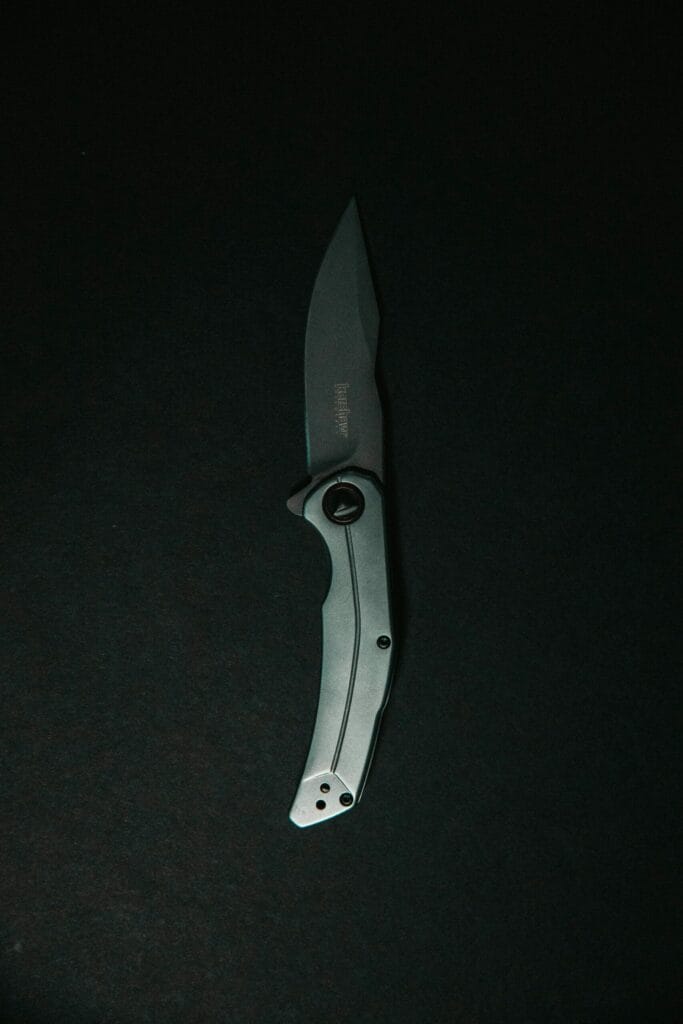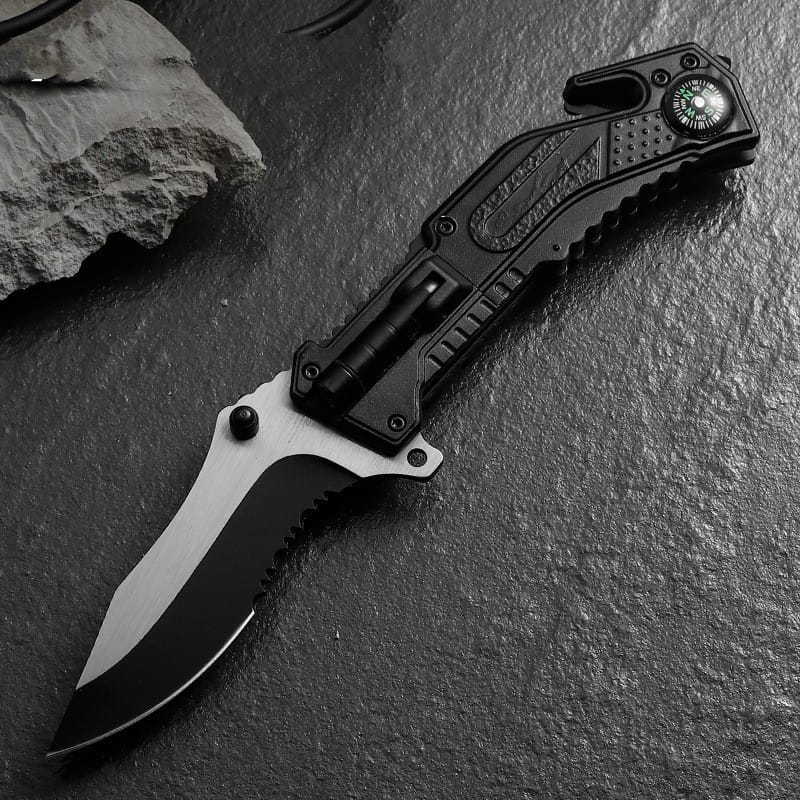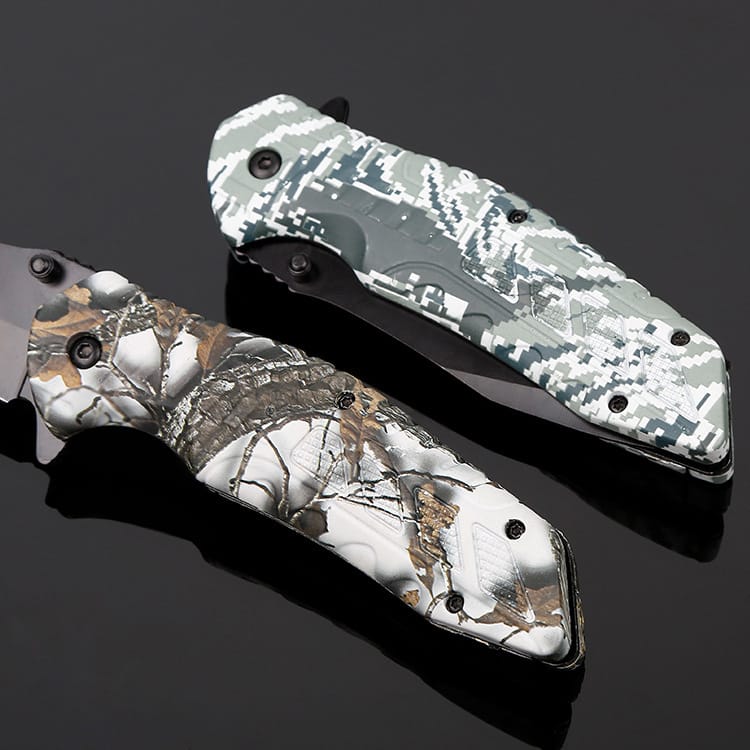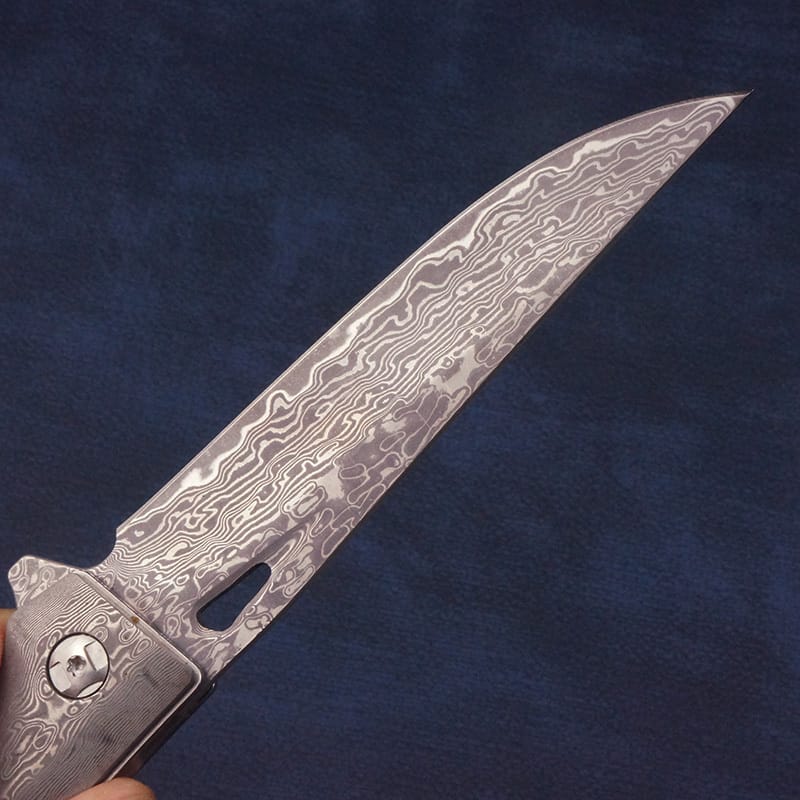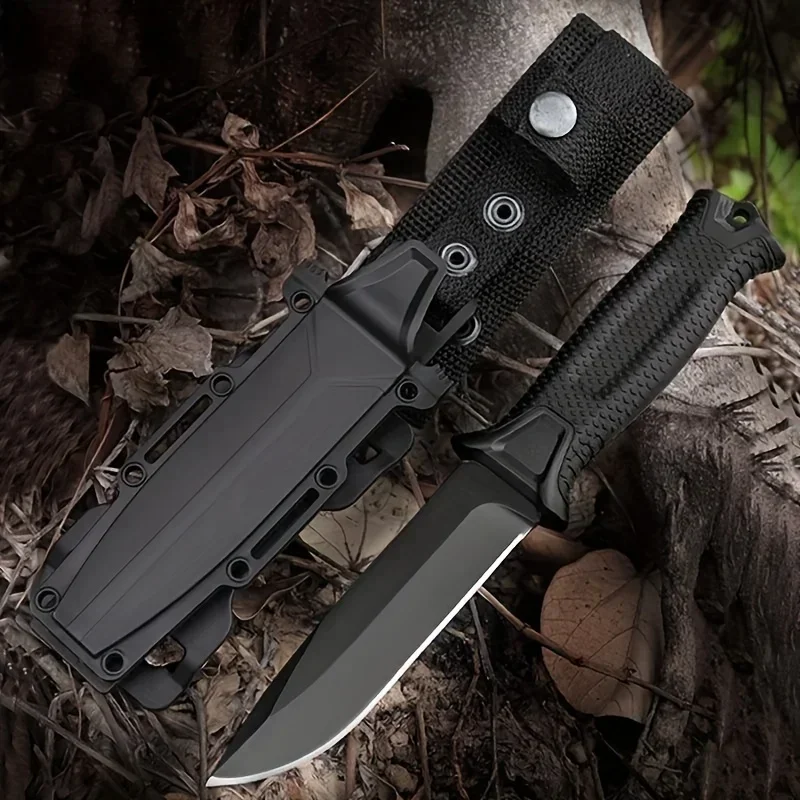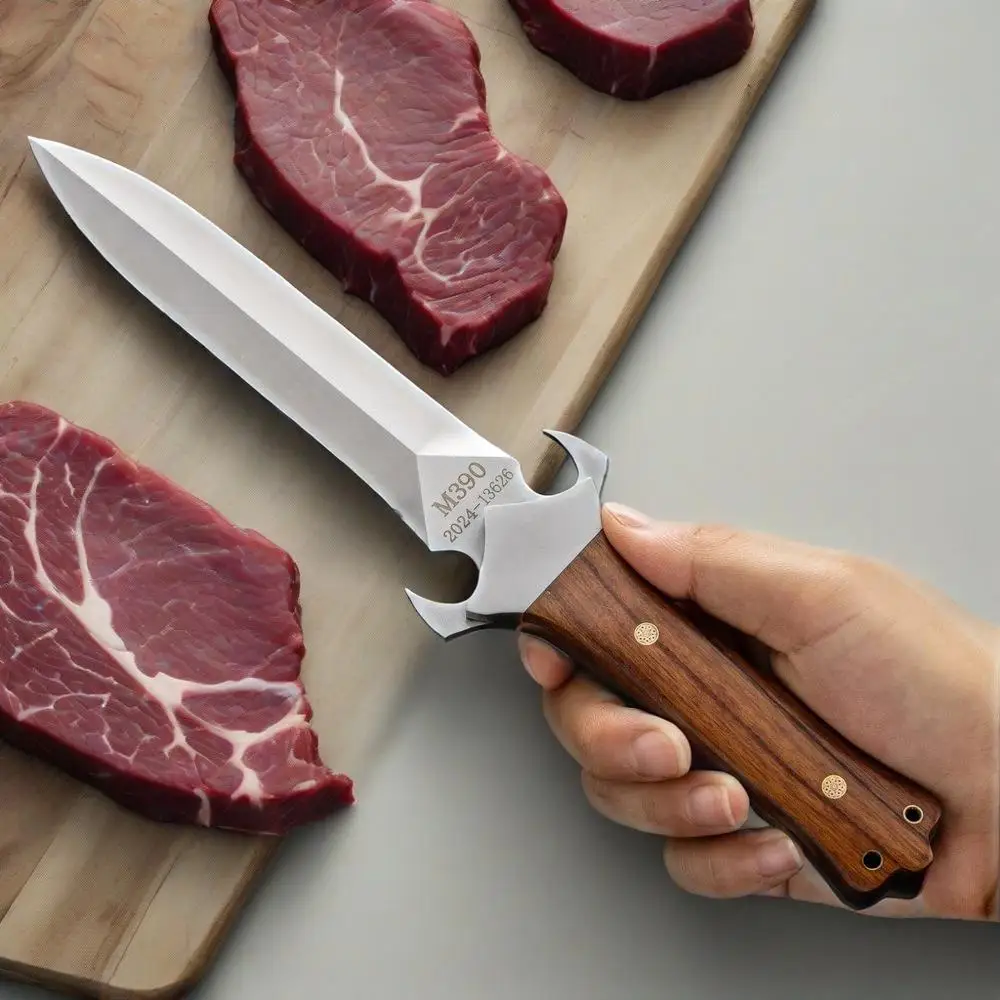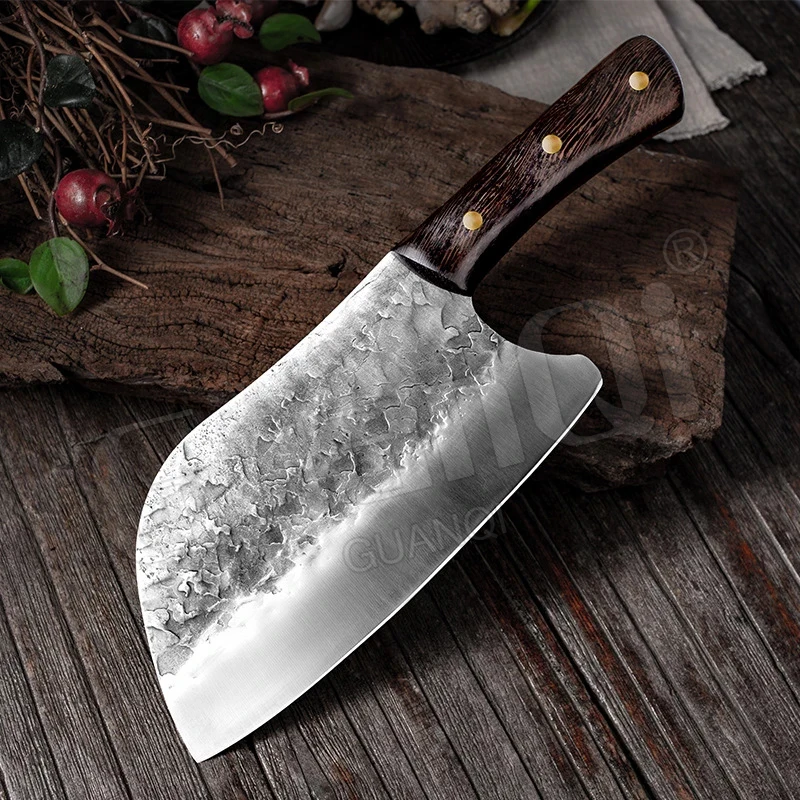Picture this: It’s a crisp Saturday morning in 2025, and you’re in your kitchen, ready to whip up a hearty breakfast. You reach for a knife to slice through a ripe tomato, but instead of a clean cut, you’re wrestling with a dull blade that squashes the fruit into a pulpy mess. Frustrating, right? I’ve been there, and it’s what sparked my obsession with finding the best kitchen knives—tools that don’t just get the job done but make cooking a joy. If you’re wondering, “What type of kitchen knife should I buy first?” you’re in the right place. This guide is your roadmap to choosing a knife that feels like an extension of your hand, whether you’re a newbie home cook or a seasoned chef.
A great kitchen knife isn’t just about sharpness; it’s about balance, comfort, and versatility. In 2025, the market is brimming with options, from classic German-style blades to sleek Japanese designs and innovative newcomers like HMMA Knife. This 6,000-word deep dive will walk you through everything you need to know: the types of knives, how to pick the right one, what makes a knife high-quality, and my top 10 picks for the best kitchen knives of 2025, including a spotlight on why HMMA Knife deserves a place in your kitchen. Plus, I’ll share care tips, answer common questions, and wrap it all up with why investing in the right knife is a game-changer. Let’s slice into it!
If you’ve ever found yourself in the kitchen, preparing a meal and struggling to slice a tomato cleanly or chop an onion evenly, then you’ve already learned an essential truth: not all knives are created equal. In 2025, where food culture is booming thanks to TikTok recipes, meal kits, and a newfound appreciation for home cooking, choosing the best kitchen knives isn’t just a culinary decision — it’s a lifestyle upgrade.
But with the dizzying array of options out there — from budget blades to artisan steel crafted by bladesmiths in Japan — how do you know which knife to buy first? Whether you’re outfitting your first apartment kitchen or upgrading a dull drawer full of hand-me-downs, this guide will walk you through everything you need to know about the best kitchen knives of 2025. And we’ll introduce you to HMMA Knife, a brand that’s not only earning praise from chefs but also making waves with home cooks like you.
Let’s dive in.
Types of Kitchen Knives and Their Uses
The world of kitchen knives can feel like a maze, with blades of all shapes and sizes promising to revolutionize your cooking. But not every knife is created equal, and understanding their purposes is key to choosing the best kitchen knives for your needs. Here’s a breakdown of the most common types and when to reach for them.
Chef’s Knife
The chef’s knife is the rock star of the kitchen, and if you can only buy one knife, this is it. Typically 6 to 12 inches long (8 inches is the sweet spot for most), it has a broad, curved blade that’s perfect for chopping, slicing, and dicing. Whether you’re mincing garlic or breaking down a chicken, a chef’s knife handles it all with ease. Its versatility makes it a staple in both home and professional kitchens.
- Best for: All-purpose tasks like chopping vegetables, slicing meat, and mincing herbs.
- Why it’s essential: Its rocking motion and balanced weight make it intuitive to use.
Santoku Knife
Hailing from Japan, the santoku knife is a close cousin to the chef’s knife but with a thinner, straighter blade, often 5 to 7 inches long. Its name means “three virtues,” referring to its prowess in slicing, dicing, and mincing. Santokus excel at precision tasks and are lighter than chef’s knives, making them ideal for smaller hands or delicate cuts.
- Best for: Precision slicing of fish, vegetables, and boneless meats.
- Why it’s great: Its lightweight design and sharp edge make it a favorite for intricate prep.
Paring Knife
Small but mighty, the paring knife (2.5 to 4 inches) is your go-to for detailed work. Peeling apples, coring strawberries, or deveining shrimp? This is your knife. Its compact size gives you control for tasks too fiddly for larger blades.
- Best for: Peeling, coring, and trimming small produce.
- Why it’s handy: Its precision makes it indispensable for delicate tasks.
Bread Knife
With its serrated edge, a bread knife (7 to 10 inches) is designed to saw through crusty loaves without crushing the soft interior. It’s also great for slicing tomatoes or cutting cakes, thanks to its toothy blade.
- Best for: Bread, tomatoes, and delicate baked goods.
- Why it’s useful: The serrated edge tackles tough exteriors with ease.
Utility Knife
A utility knife (4 to 6 inches) is a smaller version of a chef’s knife, perfect for tasks that are too big for a paring knife but too small for a chef’s knife. Think slicing sandwiches or carving chicken breasts.
- Best for: Medium-sized tasks like slicing fruit or trimming meat.
- Why it’s versatile: It bridges the gap between paring and chef’s knives.
Boning Knife
With a narrow, flexible blade (5 to 7 inches), a boning knife is built for precision work like deboning poultry or filleting fish. Its flexibility lets you navigate around bones with ease.
- Best for: Deboning meat, filleting fish, and trimming fat.
- Why it’s specialized: Its flexibility makes it a must for meat-heavy cooks.
Cleaver
A cleaver is a heavy, rectangular blade (6 to 8 inches) designed for hacking through bones and tough cuts of meat. It’s also great for smashing garlic or scooping up chopped ingredients.
- Best for: Chopping bones, crushing garlic, and heavy-duty tasks.
- Why it’s powerful: Its weight does the work for you.
Each of these knives has a role, but for a beginner, the chef’s knife or santoku is the best starting point due to their versatility. Brands like HMMA Knife offer stunning options in these categories, blending functionality with artistry.
How to Choose the Best Kitchen Knife for Your Needs
Choosing the best kitchen knives is a personal journey, like picking out a favorite pair of shoes. It’s not just about what’s popular—it’s about what feels right for you. Here are the key factors to consider.
Do you meal prep every Sunday? Or are you the type who cooks on the fly after work? The best kitchen knives for you will match your habits. If you’re chopping pounds of veggies, invest in a sturdy chef’s knife. Casual cook? A versatile Santoku or a quality utility knife might be better.
Your Cooking Style
Think about what you cook most often. If you’re a veggie-heavy cook, a santoku or chef’s knife with a sharp, thin blade will make quick work of carrots and greens. If you’re a meat enthusiast, a boning knife or cleaver might be a priority. For most home cooks, a chef’s knife is the safest bet because it handles everything from herbs to proteins.
Blade Material
Knives are typically made from stainless steel, carbon steel, or a hybrid like high-carbon stainless steel. Here’s the breakdown:
- Stainless Steel: Low maintenance, resistant to rust, and widely available. Perfect for beginners.
- Carbon Steel: Sharper and easier to sharpen but prone to rust if not cared for. Ideal for pros who love maintenance.
- High-Carbon Stainless Steel: The best of both worlds—sharp, durable, and low-maintenance. Brands like HMMA Knife use this for their premium blades.
Handle Comfort
A knife’s handle should feel like it was made for your hand. Look for ergonomic designs that reduce fatigue during long prep sessions. Wood, plastic, or composite handles are common, but balance is key—too heavy, and it feels clunky; too light, and it lacks control. Test different knives if possible, or read reviews for insights on grip.
Blade Style: German vs. Japanese
- German Knives: Heavier, with a curved blade for rocking cuts. Great for robust tasks like chopping root vegetables. Think Wüsthof or Zwilling.
- Japanese Knives: Lighter, with thinner, straighter blades for precision. Ideal for slicing fish or delicate veggies. Think Shun or HMMA Knife.
Budget
You don’t need to spend a fortune, but quality matters. Entry-level best kitchen knives from brands like Victorinox start around $40, while premium options like HMMA Knife range from $100 to $300. Invest in one great knife rather than a mediocre set.
Size and Weight
An 8-inch chef’s knife is the Goldilocks size for most people—not too big, not too small. If you have smaller hands, a 6-inch blade or santoku might feel better. Weight is subjective; some love the heft of a German knife, while others prefer the nimble feel of a Japanese one.
Try Before You Buy
If possible, hold the knife in a store to test its balance and grip. Online buyers can rely on detailed reviews or brands with good return policies, like HMMA Knife, which offers a satisfaction guarantee.
What Makes a Kitchen Knife High-Quality
Not all knives are created equal, and the best kitchen knives stand out for their craftsmanship. Here’s what separates a great knife from a mediocre one.
Blade Sharpness
A high-quality knife arrives razor-sharp and holds its edge through repeated use. The best kitchen knives are sharpened to a 15- to 20-degree angle per side, balancing sharpness with durability. Japanese-style knives, like those from HMMA Knife, often lean toward the sharper end of this spectrum.
Material Quality
Premium knives use high-carbon stainless steel or layered Damascus steel for durability and aesthetics. The steel’s hardness, measured on the Rockwell Hardness Scale (HRC), should be between 55 and 62 for home use. Too soft, and the blade dulls quickly; too hard, and it’s prone to chipping.
Balance and Construction
A well-balanced knife feels effortless to use. Look for full-tang construction, where the blade extends through the handle, for durability and stability. Forged knives (made from a single piece of heated steel) are generally superior to stamped ones (cut from a sheet), though some stamped knives, like those from Global, are excellent.
Handle Design
The handle should be comfortable, secure, and resistant to slipping, even when wet. High-quality knives often feature ergonomic handles made from materials like Micarta, wood, or composite. HMMA Knife uses hand-polished resin-wood hybrids for both beauty and grip.
Craftsmanship
Attention to detail—like seamless blade-to-handle transitions or a polished finish—signals quality. Handmade or small-batch knives, like those from HMMA Knife, often showcase artisanal touches that mass-produced brands lack.
Durability
A great knife withstands years of use without chipping, warping, or losing its edge. Regular maintenance helps, but the best knives require less frequent sharpening and resist corrosion.
Why choose HMMA kitchen knife ?
Top 10 Picks for the Best Kitchen Knives in 2025
After testing dozens of knives and scouring reviews, I’ve curated the best kitchen knives for 2025. These picks span budgets, styles, and brands, with HMMA Knife earning a well-deserved spot for its innovation and quality.
1. HMMA Knife 8-Inch Chef’s Knife
- Price: $179
- Why It’s Great: This Japanese-inspired chef’s knife combines a high-carbon stainless steel blade with a stunning resin-wood handle. Its hybrid design offers the precision of a Japanese knife and the durability of a German one. At 8.2 ounces, it’s perfectly balanced for long prep sessions.
- Pros: Razor-sharp edge, gorgeous aesthetics, ergonomic grip.
- Cons: Premium price, requires careful maintenance.
2. Wüsthof Classic 8-Inch Chef’s Knife
- Price: $170
- Why It’s Great: A German workhorse, this knife is hefty, sharp, and built to last. Its full-tang construction and high-carbon stainless steel blade make it ideal for heavy-duty tasks.
- Pros: Durable, comfortable handle, great for rocking cuts.
- Cons: Heavier than Japanese options, less suited for precision slicing.
3. Shun Classic 8-Inch Chef’s Knife
- Price: $159
- Why It’s Great: This Japanese beauty features a Damascus-clad blade and a lightweight design. It’s perfect for precision tasks like slicing sushi or chiffonading herbs.
- Pros: Ultra-sharp, stunning design, nimble feel.
- Cons: Chips easily if misused, needs regular sharpening.
4. Victorinox Swiss Classic 8-Inch Chef’s Knife
- Price: $61
- Why It’s Great: The best budget option, this Swiss-made knife is sharp, lightweight, and versatile. Its plastic handle is ergonomic and easy to clean.
- Pros: Affordable, reliable, low maintenance.
- Cons: Less durable than premium knives, basic aesthetics.
5. Global Classic 8-Inch Chef’s Knife
- Price: $129
- Why It’s Great: Known for its unique all-metal design, this Japanese knife is lightweight and razor-sharp. The sand-filled handle adds balance without weight.
- Pros: Sleek look, sharp edge, great for small hands.
- Cons: Handle can feel slippery when wet, less robust for heavy tasks.
6. Misono UX10 8-Inch Chef’s Knife
- Price: $199
- Why It’s Great: A favorite among pros, this Japanese knife is lightweight and wickedly sharp. Its high-carbon stainless steel blade glides through ingredients effortlessly.
- Pros: Exceptional sharpness, nimble handling, premium steel.
- Cons: Expensive, requires careful maintenance.
7. Zwilling Pro 8-Inch Chef’s Knife
- Price: $149
- Why It’s Great: This German knife offers a curved blade and a comfortable polymer handle. It’s a great middle ground between heft and precision.
- Pros: Well-balanced, durable, versatile.
- Cons: Slightly less sharp out of the box than Japanese knives.
8. Made In 8-Inch Chef’s Knife
- Price: $119
- Why It’s Great: A French-made knife with a full-tang, high-carbon stainless steel blade. It’s sharp, balanced, and eco-conscious, with sustainable packaging.
- Pros: Great value, sharp edge, sustainable production.
- Cons: Handle can feel bulky for small hands.
9. Mac Professional Hollow Edge 8-Inch Chef’s Knife
- Price: $145
- Why It’s Great: This hybrid knife blends Japanese sharpness with Western durability. Its hollow-edge blade reduces sticking during slicing.
- Pros: Lightweight, sharp, reduces food stickiness.
- Cons: Less versatile for heavy chopping.
10. Hedley & Bennett 8-Inch Chef’s Knife
- Price: $135
- Why It’s Great: With a colorful handle and a sharp, balanced blade, this knife is both functional and fun. It’s a great choice for style-conscious cooks.
- Pros: Vibrant design, sharp edge, comfortable grip.
- Cons: Slightly pricier than similar options.
These knives cater to different needs, but HMMA Knife stands out for its blend of artistry, performance, and value. Curious why? Let’s dive into a detailed review.
Detailed Review of HMMA Knife
When I first held the HMMA Knife 8-Inch Chef’s Knife, it felt like meeting an old friend who just gets you. This knife isn’t just a tool; it’s a statement of craftsmanship, designed for cooks who value both form and function. Let’s break down why it’s one of the best kitchen knives of 2025.
Let’s talk in-depth about the rising star of the culinary world: the HMMA Knife.
Crafted by artisans with an eye for detail and a commitment to excellence, HMMA’s Signature Series isn’t just a tool — it’s a statement piece. Forged from layered Damascus steel with a VG-10 core, this knife balances beauty with power. The edge slices effortlessly through meat, vegetables, and herbs, and the full-tang design means it handles like a dream.
The handle is a standout — not just because it looks good, but because it’s shaped to fit your hand like it was custom-made. Whether you’re dicing an onion or carving a roast, HMMA Knife gives you confidence and control.
Bonus? It comes in premium packaging, perfect for gifting.
Design and Aesthetics
The HMMA Knife is a showstopper. Its blade features a subtle Damascus pattern, created by layering high-carbon stainless steel for both strength and beauty. The handle, a hand-polished blend of resin and walnut, is a work of art—each one is unique, with swirls of color that catch the light. At 8.2 ounces, it strikes a perfect balance: substantial enough for control, light enough for agility.
Performance
This knife is a beast in the kitchen. Its 15-degree edge (sharper than most Western knives) glides through onions like butter, producing paper-thin slices without a tear. I tested it on everything from delicate herbs to dense butternut squash, and it handled each task with precision. The blade’s slight curve supports a rocking motion, while its thin profile excels at push cuts, making it a true hybrid of German and Japanese styles.
Comfort and Ergonomics
The handle is where HMMA Knife shines. Its contoured shape fits my hand like a glove, and the smooth finish prevents blisters during long prep sessions. The bolster is subtle, encouraging a pinch grip for better control. Even after an hour of chopping, my hand felt fresh—no cramps or fatigue.
Durability
Made with high-carbon stainless steel (HRC 60), the HMMA Knife is built to last. It resists rust and stains, even after cutting acidic ingredients like tomatoes. The full-tang construction ensures it won’t wobble or break, even under pressure. After months of use, it still holds its edge with minimal honing.
Pros and Cons
- Pros:
- Stunning design with a unique handle.
- Razor-sharp, versatile blade.
- Ergonomic and balanced for long-term comfort.
- Durable, high-quality materials.
- Cons:
- Premium price may deter budget shoppers.
- Requires careful hand-washing to preserve the handle.
Why Choose HMMA Knife?
If you’re looking for a knife that’s as beautiful as it is functional, the HMMA Knife is a no-brainer. It’s perfect for home cooks who want a premium experience without the fuss of high-maintenance carbon steel. Plus, HMMA Knife offers a 30-day money-back guarantee, so you can try it risk-free. Ready to elevate your cooking? Check it out at hmma.art.
Choosing your first kitchen knife is a rite of passage for any home cook. It says you’re ready to take your cooking seriously, to stop fighting with subpar tools and start enjoying the process. The best kitchen knives don’t just cut food — they transform the way you experience the kitchen.
Whether you’re prepping quick weeknight meals or planning elaborate dinner parties, the right knife will elevate every dish. And if you’re looking for a blend of performance, beauty, and craftsmanship, we wholeheartedly recommend checking out the HMMA Knife.
Care and Maintenance Tips
The best kitchen knives are an investment, and proper care ensures they stay sharp and reliable for years. Here’s how to keep your knives, including the HMMA Knife, in top shape.
Cleaning
- Hand-Wash Only: Dishwashers can dull blades and damage handles, especially on premium knives like HMMA Knife. Wash with mild soap and warm water, then dry immediately to prevent rust.
- Avoid Soaking: Prolonged exposure to water can harm wooden or composite handles.
Sharpening
- Hone Regularly: Use a honing rod every few uses to realign the blade’s edge. Hold the rod at a 15- to 20-degree angle and swipe the blade 5–10 times per side.
- Sharpen as Needed: Depending on use, sharpen every 6–12 months with a whetstone or professional service. For Japanese-style knives like HMMA Knife, a 15-degree angle is ideal.
- Invest in Quality Tools: A good whetstone (1000/6000 grit) or electric sharpener makes a difference.
Storage
- Use a Knife Block or Magnetic Strip: These keep blades safe and prevent dulling. Avoid tossing knives in a drawer.
- Consider a Blade Guard: For travel or drawer storage, a guard protects the edge.
Safe Handling
- Cut on Wood or Plastic: Glass or stone boards dull blades quickly. A wooden cutting board is gentle on knives like HMMA Knife.
- Don’t Hack at Bones: Use a cleaver for heavy tasks to avoid chipping delicate blades.
Maintenance Tips
- Oil Wooden Handles: If your knife has a wooden handle, apply mineral oil monthly to prevent cracking.
- Check for Rust: Even stainless steel can develop spots if left wet. Wipe down after use.
With these tips, your best kitchen knives will stay sharp and beautiful for years. For more on caring for premium blades, visit HMMA Knife for expert advice.
Frequently Asked Questions
What’s the best kitchen knife for a beginner?
A chef’s knife or santoku is ideal for beginners due to their versatility. The HMMA Knife 8-Inch Chef’s Knife is a great choice for its balance of sharpness, comfort, and durability.
Should I buy a German or Japanese knife?
It depends on your style. German knives (like Wüsthof) are heavier and better for robust tasks. Japanese knives (like HMMA Knife) are lighter and excel at precision. Try both if possible to see what feels right.
How much should I spend on a kitchen knife?
You can get a solid knife for $40–$60 (e.g., Victorinox), but premium options like HMMA Knife ($100–$200) offer better performance and longevity. Invest in one great knife over a cheap set.
How often should I sharpen my knife?
For regular home use, sharpen every 6–12 months. Hone weekly to maintain the edge. Premium knives like HMMA Knife hold their edge longer but still benefit from regular care.
Can I put my knife in the dishwasher?
No! Dishwashers can damage blades and handles, especially on high-end knives like HMMA Knife. Hand-wash and dry immediately.
Why is HMMA Knife so special?
HMMA Knife combines Japanese-inspired sharpness with Western durability, all wrapped in a stunning, artisanal design. Its high-carbon stainless steel blade and unique resin-wood handle make it a standout.
Conclusion: Investing in the Right Kitchen Knife
Choosing the right kitchen knife is like finding the perfect dance partner—it should move with you, feel natural, and make every step effortless. In 2025, the best kitchen knives blend craftsmanship, performance, and style, transforming cooking from a chore into a creative outlet. Whether you’re drawn to the versatility of a chef’s knife, the precision of a santoku, or the artistry of a brand like HMMA Knife, the right blade can elevate your kitchen game.
My advice? Start with a single, high-quality chef’s knife—something versatile enough to handle most tasks but crafted to last. The HMMA Knife 8-Inch Chef’s Knife is a fantastic choice, offering sharpness, balance, and beauty that make every cut a pleasure. Pair it with proper care, and it’ll be your kitchen companion for years.
Ready to find your perfect knife? Explore the stunning range at HMMA Knife and start slicing with confidence. What’s your go-to kitchen knife, or are you still searching for the one? Let’s chat in the comments—I’d love to hear your thoughts!
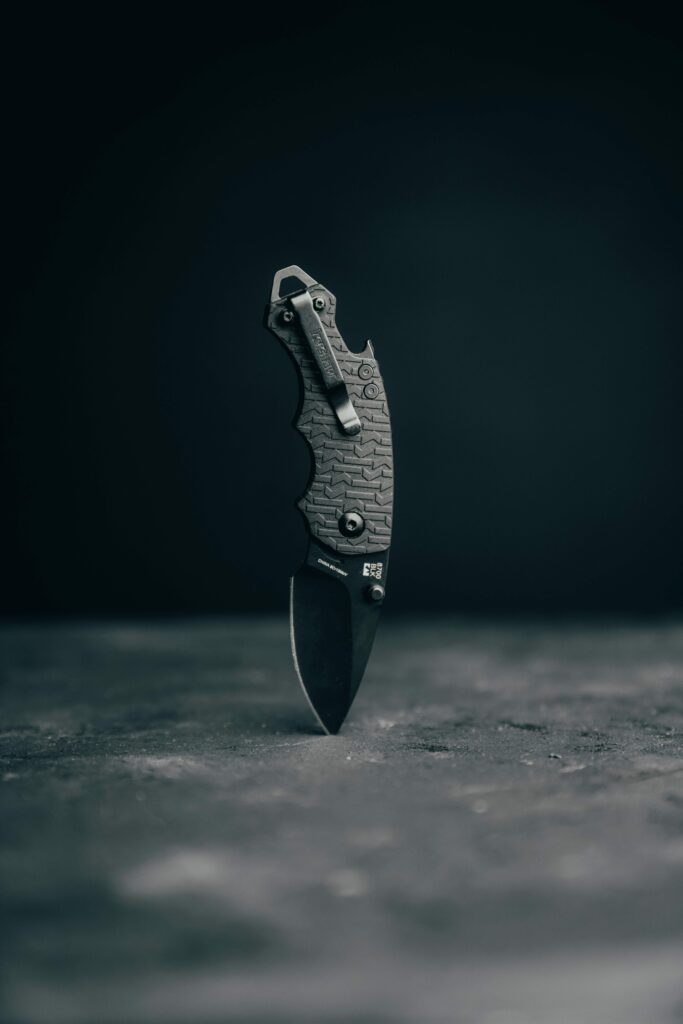
We are a knife factory with 30 years of manufacturing experience
HMMA has large range of knives, which including hunting knives, kitchen knives, tactical knives and so on…
